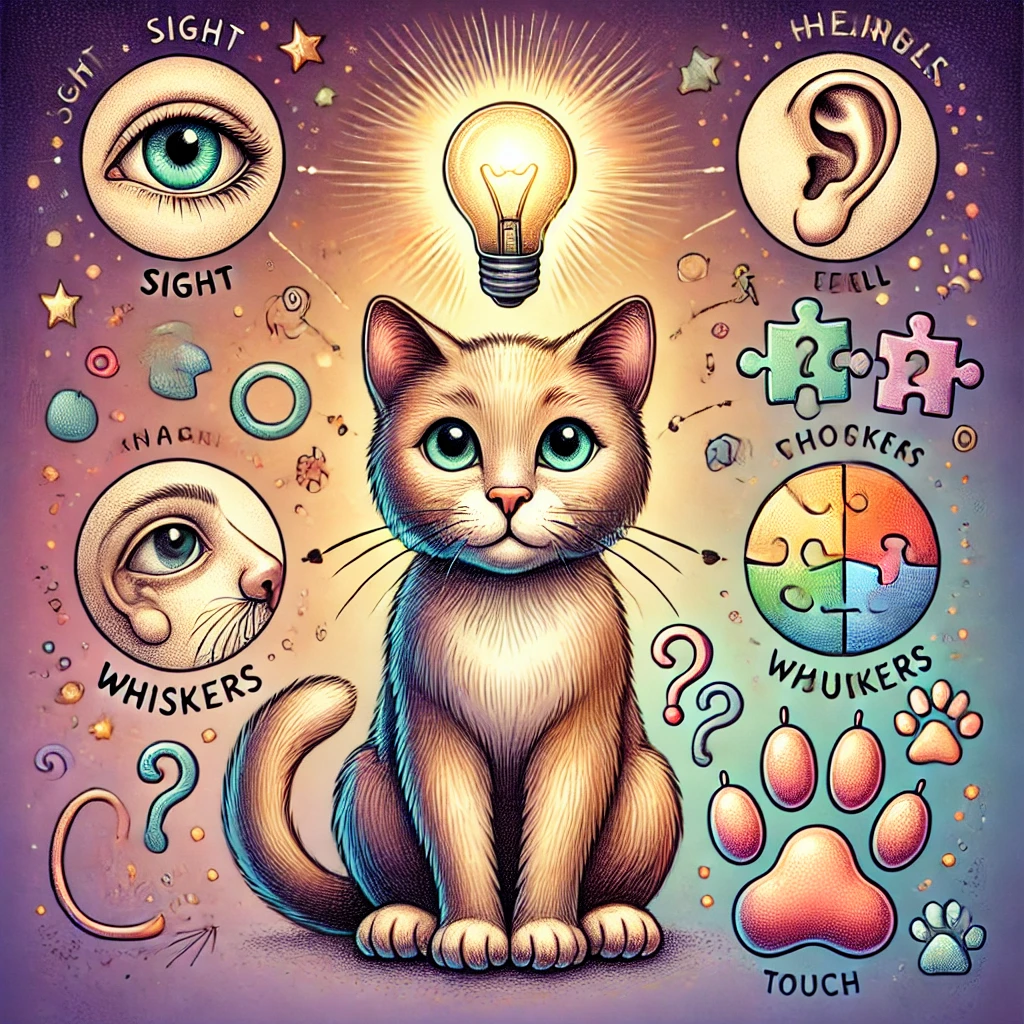Introduction
Feline cognition is a fascinating field that explores how cats think, learn, and perceive the world around them. By understanding feline cognition, you can better interpret your cat’s behavior and meet their needs, leading to a stronger relationship. In this comprehensive guide, we’ll delve into how cats perceive their environment, their learning processes, problem-solving abilities, and emotional intelligence.
How Cats Perceive Their Environment Through Their Senses
Cats experience the world differently from humans, relying heavily on their heightened senses. Understanding these sensory perceptions is crucial in comprehending feline cognition.
Vision: Seeing the Unseen
Night Vision
Cats have exceptional night vision, allowing them to see in low-light conditions. This is due to a high number of rod cells in their retinas, which are sensitive to dim light. Learn more about cat vision.
Motion Detection
They are adept at detecting movement, making them excellent hunters. Their eyes are attuned to notice even the slightest motion.
Color Perception
While cats can see some colors, their color vision is not as vibrant as humans’. They perceive blues and yellows better than reds and greens.
Hearing: The Sound Detectives
High-Frequency Sounds
Cats can hear frequencies up to 64 kHz, much higher than humans, who hear up to 20 kHz. This helps them detect the ultrasonic communication of rodents and other small prey.
Ear Mobility
With 32 muscles in each ear, cats can rotate their ears 180 degrees to pinpoint the exact location of a sound.
Smell: Navigating the World Through Scent
Olfactory Sensitivity
A cat’s sense of smell is 14 times stronger than a human’s, with around 200 million odor-sensitive cells. They rely on scent for identification, marking territory, and detecting pheromones.
Scent Marking
Cats use scent glands on their cheeks, paws, and tail base to mark territory and communicate with other cats.
Taste and Touch: Experiencing Texture and Flavor
Taste Buds
Cats have about 470 taste buds and lack sweet taste receptors, showing little interest in sugary foods.
Whiskers as Sensors
Their whiskers, or vibrissae, are highly sensitive tactile hairs that help them detect changes in their environment.
The Learning Processes of Cats: Observation and Conditioning
Understanding the learning processes is essential in studying feline cognition.
Observational Learning
Imitation
Cats can learn behaviors by watching other cats or humans. Kittens often mimic their mother’s actions.
Environmental Exploration
They learn about their surroundings by exploring and interacting with objects.
Classical Conditioning
Association
Cats can associate a neutral stimulus with a significant event, such as associating the sound of a can opener with mealtime.
Operant Conditioning
Reinforcement
Behaviors followed by rewards are likely to be repeated. Read our guide on positive reinforcement.
Punishment
Negative consequences can decrease unwanted behaviors but must be used carefully.
Trial and Error Learning
Problem-Solving
Cats will try different actions to achieve a goal, showcasing their problem-solving abilities, a key aspect of feline cognition.
Problem-Solving Abilities and Examples of Feline Intelligence
Cats exhibit impressive problem-solving skills, demonstrating their intelligence.
Puzzle Solving
Interactive Toys
Cats can figure out how to retrieve treats from puzzle feeders.
Opening Doors
Some cats learn to open doors or cabinets.
Navigation Skills
Homing Ability
Cats have been known to find their way back home from long distances. Discover how cats navigate.
Social Intelligence
Human Interaction
Cats can read human gestures and facial expressions.
Memory and Learning
Long-Term Memory
Cats remember experiences and apply this knowledge to future situations.
Emotional Intelligence: How Cats Experience Emotions
Emotional intelligence is a significant component of feline cognition.
Recognizing Emotions in Cats
Happiness
Indicated by purring, kneading, and relaxed posture.
Fear and Anxiety
Shown through flattened ears, dilated pupils, and hiding behavior.
Empathy and Bonding
Attachment to Owners
Cats form strong bonds with their human caregivers.
Stress Responses
Behavioral Changes
Stress can lead to changes in appetite and over-grooming.
Conclusion
By understanding feline cognition, you can tailor your care to meet your cat’s physical and emotional needs. Recognizing how they perceive the world, learn, solve problems, and experience emotions enables you to communicate more effectively and strengthen your bond.






